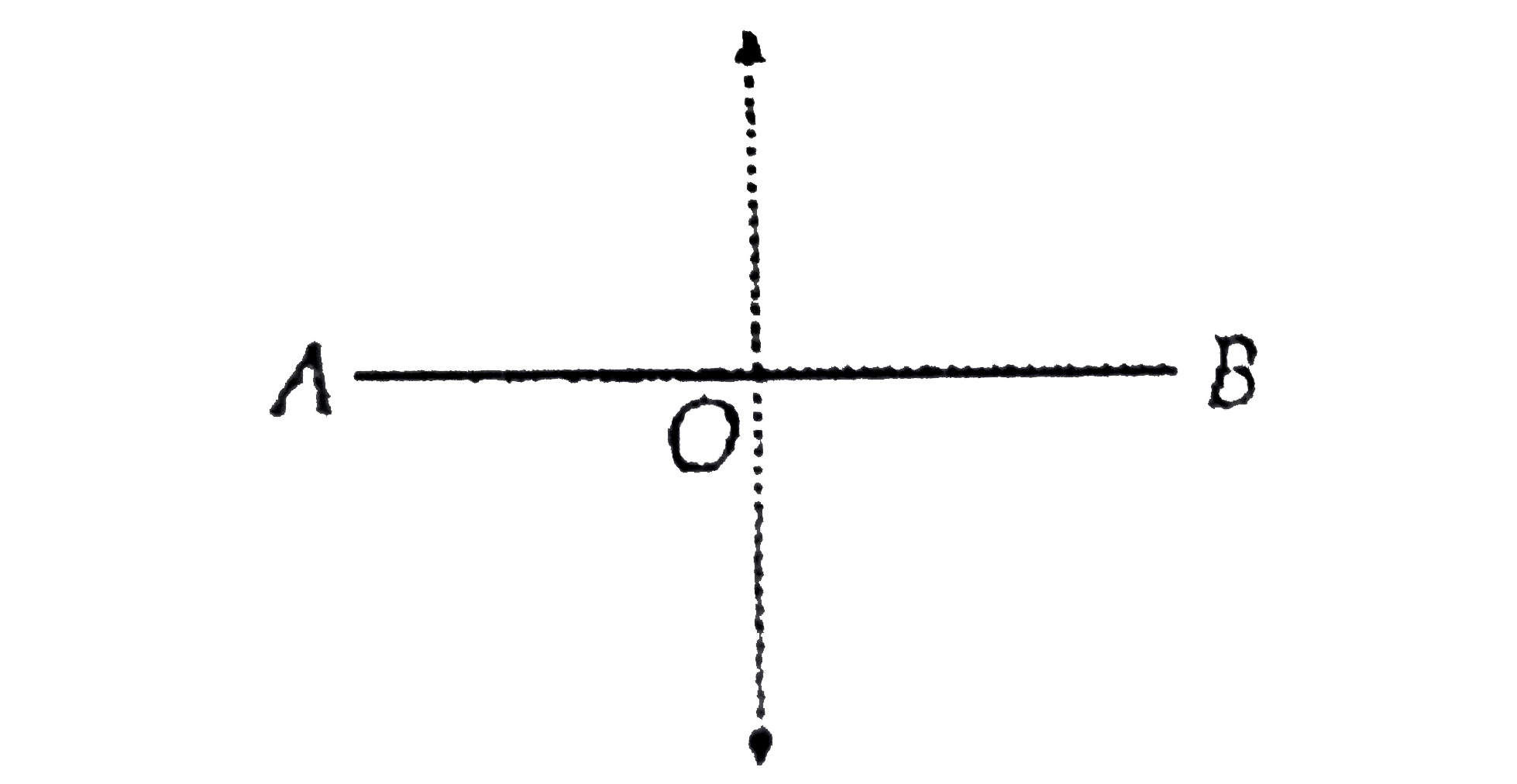A particle executes simple harmonic motion of period T and amplitude l along a rod AB of length 2l. The rod AB itself executes simple harmonic sotion of the same period and amplitude in a direction perpendicular to its length. Initially, both the particle and the rod are in their mean positions. The path traced out the particle will be

a circle of radius l
a straight line inclined at π4 to the rod
an ellipse
parabolic
The correct Answer is:B
Let the simple harmonic equation for the particle be x=/sinωt……..(i)
Where ω is its angular velocity.
since the S.H.M. of the rod has the same period and amplitude and its vibration is perpendicular to that of the particle, its equilibrium is y=/cos(ωt+ϕ) where ϕ is the intial phase difference(phase angle for y). But both the particle as well as the rod pass thorugh the mean position simultaneously. Hence ϕ=π/2since x=y=o at t=0.
So, y=/cos(ωt+π/2)=−/sinωt......(ii)
Eliminating | from equation (i)and (ii), we have y=−x or y=x, which is the equation to a straight line at angle π/4 to the rod.
Topper's Solved these Questions
- SIMPLE HARMONIC MOTION Book:VMC MODULES ENGLISHChapter:SIMPLE HARMONIC MOTION Exercise:6-previous year question
Explore 56 Videos
- SIMPLE HARMONIC MOTION Book:VMC MODULES ENGLISHChapter:SIMPLE HARMONIC MOTION Exercise:7-previous year question
Explore 46 Videos
- SIMPLE HARMONIC MOTION Book:VMC MODULES ENGLISHChapter:SIMPLE HARMONIC MOTION Exercise:LEVEL (1)
Explore 75 Videos
- ROTATIONAL MOTION Book:VMC MODULES ENGLISHChapter:ROTATIONAL MOTION Exercise:JEE Advanced (Archive) (True/False Type)
Explore 3 Videos
- SYSTEM OF A PARTICLES & ROTATIONAL MOTIONBook:VMC MODULES ENGLISHChapter:SYSTEM OF A PARTICLES & ROTATIONAL MOTIONExercise:IN-CHAPTER EXERCISE F
Explore 10 Videos
Similar Questions
A particle executing of a simple harmonic motion covers a distance equal to half its amplitude in on e second . Then the time period of the simple harmonic motion is
View SolutionA particle executes a simple harmonic motion of time period T. Find the time taken by the particle to go directly from its mean position to half the amplitude.
View Solution
Knowledge Check
A particle is executing simple harmonic motion. Its total energy is proportional to its
Adisplacement from equilibrium positionBfrequency of oscillationCsquare of amplitude of motionDvelocity at equilibrium positionA particle executing simple harmonic motion with an amplitude A. The distance travelled by the particle in one time period is
AzeroBAC2AD4AA particle executing simple harmonic motion with an amplitude A and angularr frequency ω. The ratio of maximum acceleration to the maximum velocity of the particle is
AωABω2ACωDω2A
A particle executing simple harmonic motion of amplitude 5cm has maximum speed of 31.4cm/s. The frequency of its oscillation is
View SolutionA particle executing simple harmonic motion of amplitude 5 cm has maximum speed of 31.4 cm / s . The frequency of its oscillation is
View SolutionA particle executes simple harmonic motion of period 16s. Two seconds later after it passes through the center of oscillation its velocity is found to be 2m/s. Find the amplitude.
View SolutionA particle executes simple harmonic motion with frequqncy 2.5Hz and amplitude 2m. The speed of the particle 0.3s after crossing, the equilibrium position is
View SolutionA particle is executing simple harmonic motion with an amplitude A and time period T. The displacement of the particles after 2T period from its initial position is
View Solution